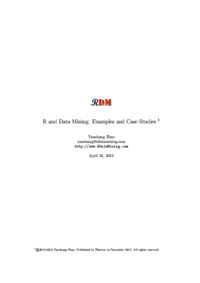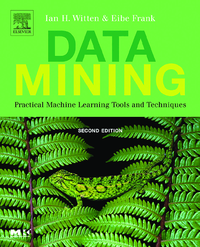Categoría "Inteligencia Artificial"
Se han encontrado 2 Coincidencias
R and Data Mining: Examples and Case Studies
R data mining machine learning analytics
135 Visitas | 171 Descargas | 2014-11-28 16:22:01 | orosado
Chapter 1 Introduction This book introduces into using R for data mining. It presents many examples of various data mining functionalities in R and three case studies of real world applications. The supposed audience of this book are postgraduate students, researchers and data miners who are interested in using R to do their data mining research and projects. We assume that readers already have a basic idea of data mining and also have some basic experience with R. We hope that this book will encourage more and more people to use R to do data mining work in their research and applications. This chapter introduces basic concepts and techniques for data mining, including a data mining process and popular data mining techniques. It also presents R and its packages, functions and task views for data mining. At last, some datasets used in this book are described.

Data Mining: Practical Machine Learning Tools and Techniques, Second Edition
mineria de datos e inteligencia artificial
128 Visitas | 201 Descargas | 2015-11-04 19:35:11 | javierd
The convergence of computing and communication has produced a society that feeds on information. Yet most of the information is in its raw form: data. If data is characterized as recorded facts, then information is the set of patterns, or expectations, that underlie the data. There is a huge amount of information locked up in databases—information that is potentially important but has not yet been discovered or articulated. Our mission is to bring it forth. Data mining is the extraction of implicit, previously unknown, and potentially useful information from data. The idea is to build computer programs that sift through databases automatically, seeking regularities or patterns. Strong patterns, if found, will likely generalize to make accurate predictions on future data.Of course, there will be problems. Many patterns will be banal and uninteresting. Others will be spurious, contingent on accidental coincidences in the particular dataset used. In addition real data is imperfect: Some parts will be garbled, and some will be missing. Anything discovered will be inexact: There will be exceptions to every rule and cases not covered by any rule. Algorithms need to be robust enough to cope with imperfect data and to extract regularities that are inexact but useful.
Contribuir
Usted puede contribuir con Libros UCLV, es importante para nosotros su aporte..
Contribuir